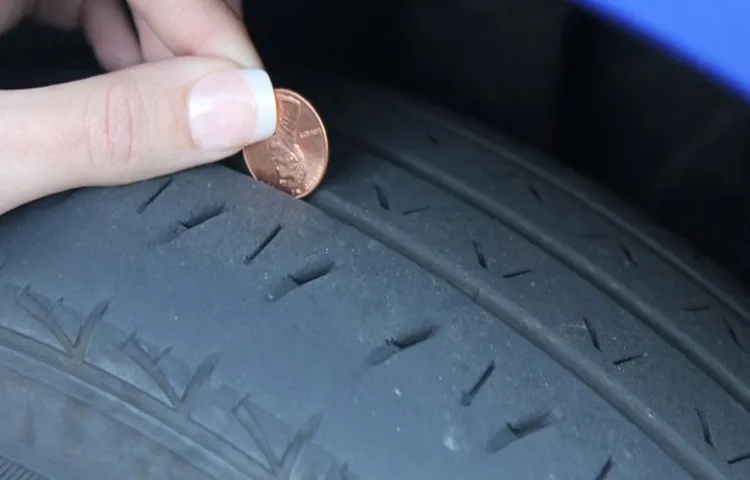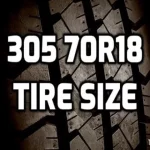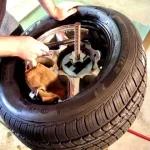Do you ever wonder why your car’s tires are wearing out faster than you expected? It can be frustrating to have to replace a tire sooner than you anticipated, especially if you’ve invested in a new set. Tire wear is a natural part of the life cycle of a tire, but there are several reasons why a tire might wear out faster than expected. In this blog post, we’ll explore some of the factors that can contribute to accelerated tire wear and provide tips on how to extend the life of your tires.
So, buckle up and let’s dive in!
Table of Contents
Tire Maintenance
If you’ve noticed that one tire on your vehicle is wearing out faster than the others, there are several reasons why this could be happening. One common cause is improper tire pressure, as overinflated or underinflated tires can cause uneven wear patterns. Another reason could be wheel misalignment, which can cause one tire to bear more weight than the others and wear out quicker.
Driving habits can also play a role, as aggressive driving, hard braking, and taking corners too quickly can all cause excessive wear on one tire in particular. Ultimately, regular tire maintenance and inspections can help prevent uneven wear, ensure proper inflation and alignment, and extend the life of your tires. So, if you notice one tire wearing out faster than the others, make sure to have it checked by a professional to determine the cause and take corrective action.
Proper Inflation
Proper Inflation is crucial when it comes to tire maintenance. It affects not only the performance of your vehicle but also the safety of your journey. Underinflated tires result in diminished fuel efficiency, decreased handling, and reduced traction.
On the other hand, overinflated tires lead to a rougher ride, shorter tire life, and uneven tread wear. The recommended tire pressure is specified in the owner’s manual or the tire placard located on the driver-side door jamb. It’s essential to check the tire pressure regularly, preferably every month, and adjust it according to the manufacturer’s recommended level.
Ensuring that your tires are properly inflated will extend their lifespan and ensure safe and efficient driving. So, don’t compromise on your safety; check your tire pressure today!
Wheel Alignment
Wheel alignment is an essential aspect of tire maintenance that ensures your vehicle’s wheels are perpendicular to the road surface. It helps to prevent uneven tire wear, improve fuel efficiency, and enhance road safety. When the wheels are not aligned correctly, it can cause the vehicle to pull to one side or the other, making it difficult to steer and control.
The poor alignment can also cause the tires to wear out more quickly, leading to costly replacements. To ensure your wheels are alignment is just right, it’s wise to have them checked at least once a year or if you notice any symptoms of misalignment, such as uneven tire wear or a vibrating steering wheel. Regular wheel alignments can prolong the life of your tires, save you money, and help keep you safe on the road.
Driving Habits
Have you ever noticed that one tire on your car wears out faster than the others? This can be a frustrating and costly issue, but it’s often the result of driving habits. One of the main causes of uneven tire wear is improper inflation. When your tires are underinflated or overinflated, they wear differently and more quickly.
Another culprit is misaligned wheels, which can cause one tire to take on more weight and wear more quickly. Additionally, aggressive driving, such as hard braking and accelerating, can also wear out your tires unevenly. So, the next time you notice one tire wearing out faster than the others, consider your driving habits and see if there are any adjustments you can make.
Driving Speed and Style
When it comes to driving, our habits can have a huge impact on our safety and the safety of those around us. One of the most important habits to cultivate is defensive driving, which means staying aware of your surroundings at all times and anticipating potential hazards. This includes things like scanning ahead for intersections, watching for pedestrians and cyclists, and maintaining a safe following distance from other vehicles.
Another important habit is staying focused on the road and avoiding distractions like texting, eating, or applying makeup while driving. And of course, it’s also crucial to obey traffic laws like speed limits and stop signs. By practicing safe driving habits, we can help reduce the risk of accidents and ensure that everyone on the road stays safe.
So the next time you get behind the wheel, remember to drive defensively, stay focused, and follow the rules of the road.
Road Conditions
Driving on challenging road conditions requires specific driving habits to ensure safety and a smooth ride. One of the most important habits to adopt is to slow down and maintain a safe distance from other vehicles. This gives you enough time to react to unforeseen obstacles, slippery surfaces or potholes which can cause accidents.
Another important habit is to keep your hands on the steering wheel and your eyes on the road. Avoid distractions such as using your phone or eating while driving, which can impair your concentration and delay your reaction time. Lastly, if you are driving uphill or downhill, you should be careful not to overaccelerate or brake hard.
This can cause your wheels to lose traction, leading to a skid and loss of control of the vehicle. By practicing these different habits, you will enhance your driving skills and stay safe while on the road. Remember, the goal is not to arrive at your destination in record time, but to get there safely.
Tire Quality and Type
Why would one tire wear out faster than another? Well, tire quality and type have a huge impact on the lifespan of your tires. A low-quality tire or a tire with an inappropriate tread pattern for your driving conditions can cause one tire to wear out faster than the others. For example, if you frequently drive on rough roads or on challenging off-road terrain, you should invest in tires specifically designed for those conditions.
If you drive primarily on the highway, a tire with a hard compound and shallow tread pattern may offer better fuel efficiency but may wear out faster. Additionally, properly maintaining your tires by checking and adjusting their pressure regularly and getting them rotated and balanced can help ensure even wear and extend their lifespan. Ultimately, investing in high-quality tires that are appropriate for your driving conditions and taking good care of them can help ensure that all of your tires wear out evenly and need to be replaced around the same time.
Tire Quality
When it comes to tire quality, the type of tire you choose can make a significant difference in its overall performance. A good quality tire can provide superior handling, braking, and stability, while a low-quality tire can compromise your safety on the road. Different types of tires are designed for specific driving conditions, such as all-season, winter, and performance tires.
All-season tires are the most common and offer a good balance of traction and durability to handle various weather conditions. Winter tires are designed for snow and ice and provide better grip in low temperatures. Performance tires are designed for sports cars and offer enhanced handling and traction at higher speeds.
It’s essential to choose the right tire type and quality for your driving needs and ensure they are properly maintained to extend their lifespan and ensure optimal performance on the road.
Tire Type
Tire type is an essential consideration when selecting tires for your vehicle. The type of tire you choose will affect your driving experience, fuel economy, and safety. There are various types of tires available in the market, such as all-season tires, summer tires, winter tires, and performance tires, each designed to meet specific driving conditions.
All-season tires are the most common and versatile type of tire that can handle moderate weather conditions, including light snow and rain. Summer tires are designed for high-performance vehicles and provide excellent grip and handling on dry roads. Winter tires, on the other hand, are designed to provide superior traction and handling in snow and ice conditions.
Lastly, performance tires offer improved handling and high-speed performance, ideal for sports cars. Finding the right tire type for your vehicle will depend on the weather conditions in your area and your driving habits. Regardless of the type, it’s essential to consider tire quality, as tires perform the critical task of supporting your vehicle’s weight and keeping it on the road safely.
Conclusion
Well, it’s quite simple really. Just like how we all have a favorite pair of shoes that we wear more often than the others, our tires also have their preferences. Factors such as driving habits, road conditions, alignment, and maintenance can all contribute to one tire wearing out faster than the others.
But don’t worry, a tire rotation every now and then can help keep their running preferences in check, and keep you and your ride cruising along smoothly.”
FAQs
What factors can cause one tire to wear out faster than the others?
There are several factors that can contribute to uneven tire wear, such as misaligned wheels, incorrect tire pressure, poor driving habits, and worn suspension components.
Is it safe to drive with unevenly worn tires?
No, driving with tires that have uneven wear can be dangerous as it can affect the vehicle’s handling, braking, and stability.
How often should I check my tire pressure to prevent uneven wear?
It is recommended to check your tire pressure at least once a month or before going on a long journey.
Can rotating my tires help prevent uneven wear?
Yes, rotating your tires regularly can help distribute the wear evenly, thereby extending the lifespan of your tires.
Can overloading my vehicle cause uneven tire wear?
Yes, overloading your vehicle can put extra pressure on your tires, causing them to wear out faster.
How can I tell if my tires are wearing out unevenly?
You can check your tires for uneven wear by inspecting the tread depth and looking for signs of wear on the edges or center of the tire.
Should I replace all four tires at once to prevent uneven wear?
It is recommended to replace all four tires at once to ensure even wear and maximum safety. However, if only one tire needs replacing, it is important to match it with a tire of the same size and tread pattern.



